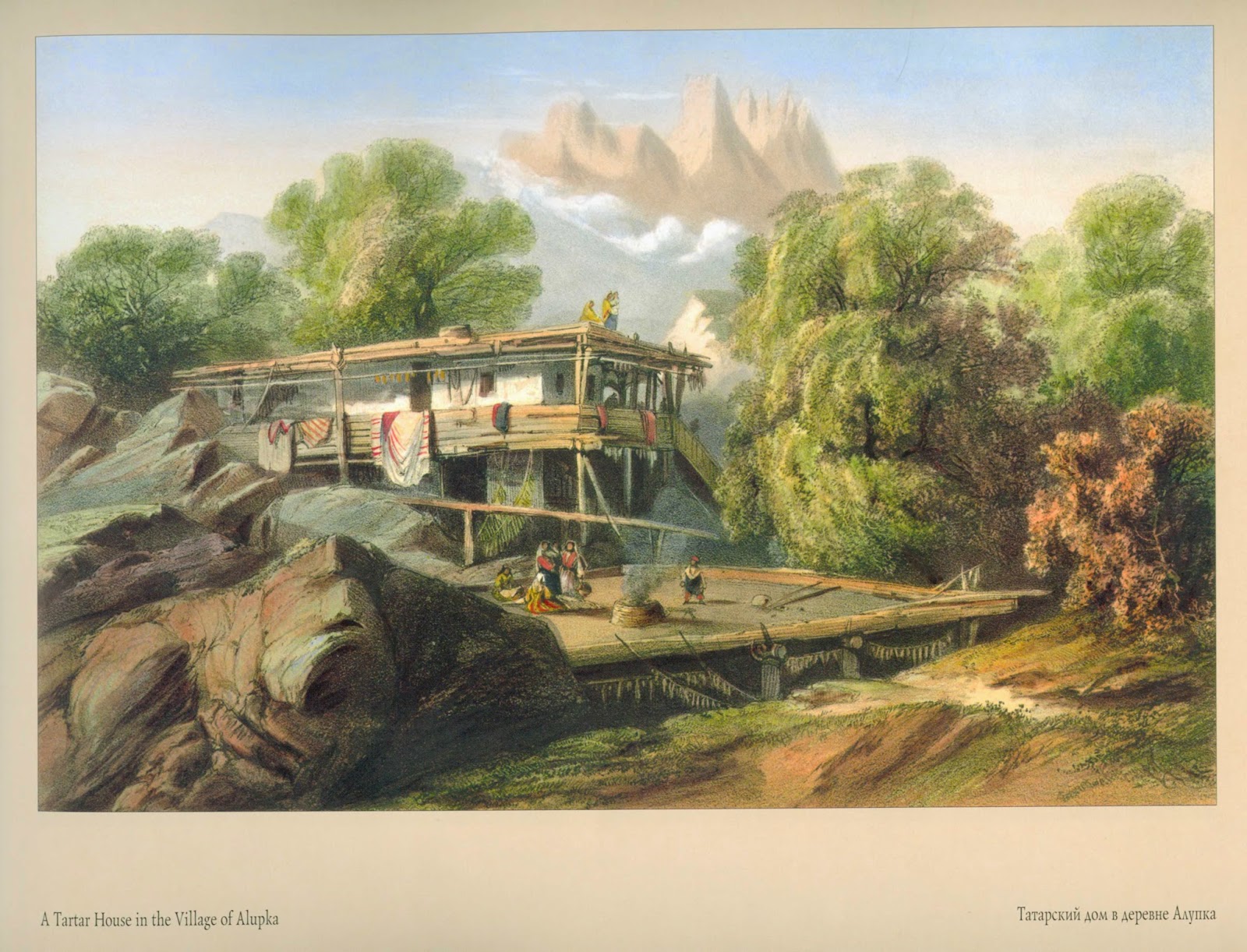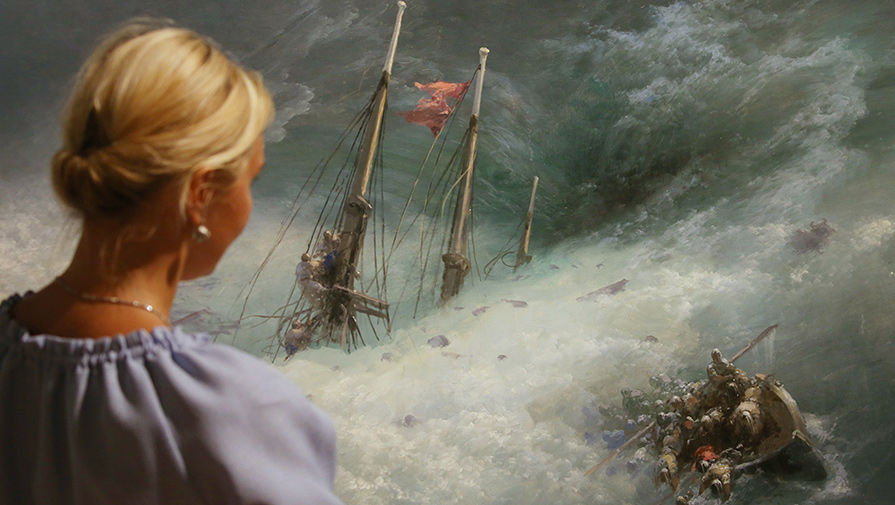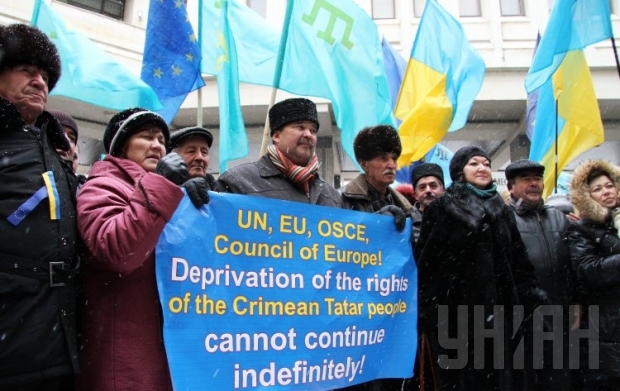The construction by Russia of the Kerch Strait (Crimean) Bridge goes along according to the plan and to the song. That is, the bridge is still not completed, though a competition for the best song about its construction has been held – and its finalists have even been chosen.
“We fly like birds, we use the atom, and beneath the cities we built metros. But a gap gapes between our fellow Crimea and faithful Russia, disturbing us inside,” sang the 3rd place contestant.
Satellite images of Kerch Strait Bridge (February 2016 - October 2017)
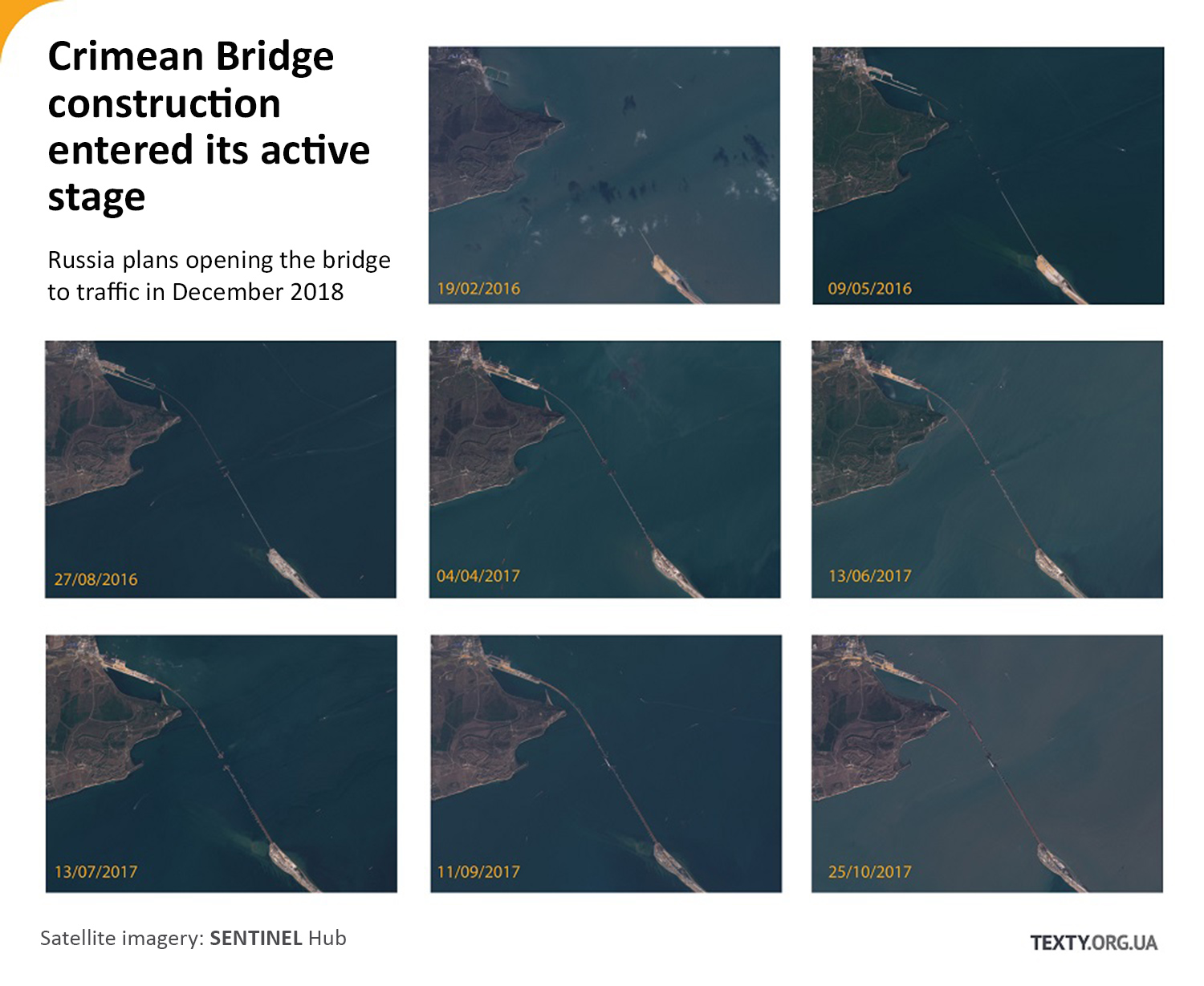
In the pictures, the bridge extends from the long spit-like Tuzla Island. This Ukrainian island was at the center of a conflict back in 2003, when Russia began to build a dam from its shores to Tuzla.
Construction ended only after Ukraine indicated that it would resort to arms if construction crossed the Ukrainian border. Completed portions of the dam have been re-used in the current bridge.
Editor's Note
2003 Tuzla Dispute, an early attack of the hybrid war against Ukraine
- September 2003: Russia starts building works on a causeway to link southern Russia to Ukraine's Tuzla Island in the Kerch Strait east of Crimea.
- The local Russian authorities claim that the project is designed to prevent coastal erosion.
- October 2003: The Russian authorities claimed the 1954 transfer of Crimea to Ukraine had only included the continental parts of Crimea ignoring the fact that the Tuzla Island had been administratively part of Crimea since 1941.
- 23 October 2003: The Ukrainian Parliament issues a resolution "to eliminate a threat to the territorial integrity of Ukraine that appeared as a result of dam construction by the Russian Federation in the Strait of Kerch."
- 30-31 October 2003: Talks start between Ukraine and Russi leading to the suspension of the construction of the dam.
- December 2003: Ukraine stations border guards on the island.
- Following the conflict, the Crimean Parliament ordered the establishment of a new settlement on the island.
- 6 September 2006: The Kerch city administration sabotaged the decree, claiming that it conflicts with the administrative-territorial composition of the city.
- Spring 2014: Russia invades Ukraine's Crimean peninsula and later annexes it alongside the Tuzla Island.
- According to international law, Crimea remains Ukrainian.
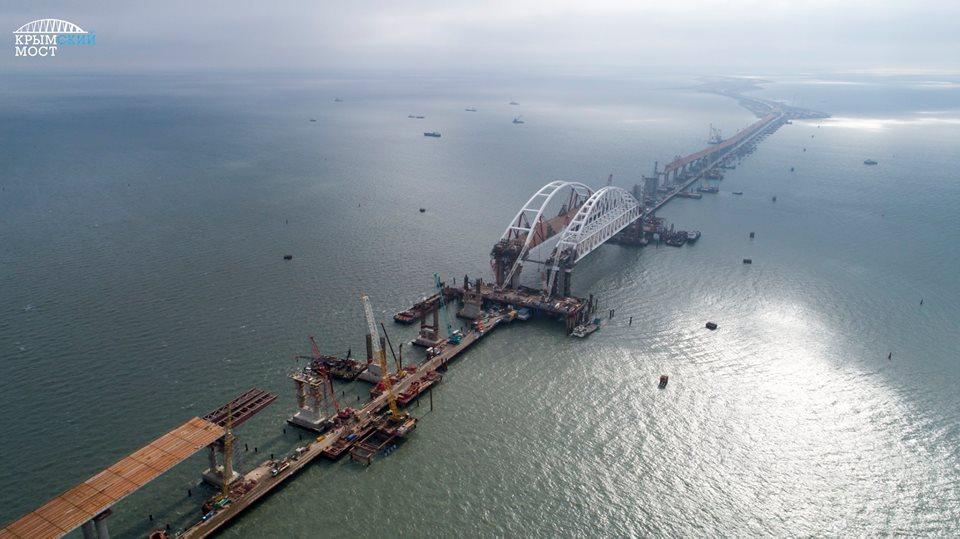
four from the side of Crimea and five from the side of Taman. Photo: most.life
Stalin's Crimean Bridge
Historians say that the lack of convenient connection between Crimea and Russia began to concern the Soviet government in the beginning of the 1930s. Stalin even ordered the construction of a bridge from German contractors, but they did not have time to build it. For several years, while occupying Crimea, Hitler decided to build a bridge for his own army and even transported the necessary materials to Crimea. But this was not a large-scale undertaking: the Germans limited themselves to building a cable-car. The German army retreated from Crimea in 1944, and they left behind the building materials they had brought. By the summer of 1944 Soviet construction of a bridge had already begun.
As always, construction was rushed, firstly, because the bridge was needed to transport the army into southern Ukraine, and secondly, because the solemn unveiling of the bridge was planned for the 27th anniversary of the October Revolution. The bridge was raised up in 150 days. (It fell apart 107 days afterward.)
That much-suffering bridge was located north of the spot where the new one will be. It connected Crimea to the Chushka spit, over the shortest distance between Crimea and Russia. This is the current route of the ferry, the site of the present-day railway connection between Russia and Crimea.
Putin's Kerch Bridge
Russian President Vladimir Putin is also rushing the construction of the bridge, though not as intensely as Stalin had. Car movement over the bridge is promised by the end of 2018, right in time for the presidential elections. I’m afraid that Putin will ride, with much pomp, right across this bridge to Crimea. Just because that’s what Stalin did.
Read also: Kerch bridge emblematic of new Russian imperialism, Kazarin says
In the media, there has been much lively discussion over whether the bridge-supports will stand on the shaky ground of the Kerch Straits. After all, as a number of experts have assured, the straits have multiple peculiarities which significantly complicate construction: a tectonic fault passes through the ground, with numerous ground volcanoes, under a thick, in some places 60-meters-thick, layer of silt. We will leave these questions to civil engineering experts.
The most important function of the bridge is this: to connect the image of contemporary Russia with the post-war might of the Soviet Union, to reconstruct the image of the victors over Nazism, to become part of an international community of its own ordering. When considered in this sense, Russia has approached the construction of the bridge on solid ground.
On the whole, construction of the Kerch Strait Bridge can be divided into 5 stages:
- Fabricate the image of Fascist-Enemies
- “Deliverance” of Crimea from the Fascists
- Laying of the foundation and raising the supports
- Gathering and setting-up of support structures
- Completion of a road for cars across the bridge. Then, maybe later, a railroad.
Unless Russia speeds up the plan, it is still, as of now (according to the official resource “Crimean Bridge”) on Stage 4, gathering and setting up the support structures.
The Kerch Strait Bridge built in 1944 stood for less time than it took to build. But that still gave it enough time to give birth to myths – such as the one that told how Joseph Stalin rode a train across the bridge to the Yalta Conference.

The Yalta Conference was unusually important for the USSR. This was Stalin’s moment of glory, in which British Prime Minister Winston Churchill and US President Franklin Roosevelt arrived in Yalta on “Stalin’s turf,” negotiated with him as equals, and together divided up the world.
This is what today’s leader of Russia lacks. We only need remember how in 2014 Official Moscow struggled to hide the refusal of European leaders to attend the Russian military parade in commemoration of the Day of Victory on 9 May. At that time the Russian TV station “Zvezda” reported on the Croatian President’s refusal
to attend the parade with the sufficiently ironic headline “The President of Croatia has decided to travel to Moscow on 9 May.” Official Moscow simply does not want to be in isolation and instead desires the recognition which the USSR received after the war.
Among the resolutions of the Yalta Conference was the so-called “Declaration of Liberated Europe” which legitimated the political control of the USSR over the countries which it occupied. There in Yalta, the “Big Three” agreed to the creation of the United Nations, they determined the structure and foundation of the functions of the future organization, distributing permanent membership in the Security Council and bringing with it the right of veto, while they horse-traded over the number of Soviet Republics which would join the UN.
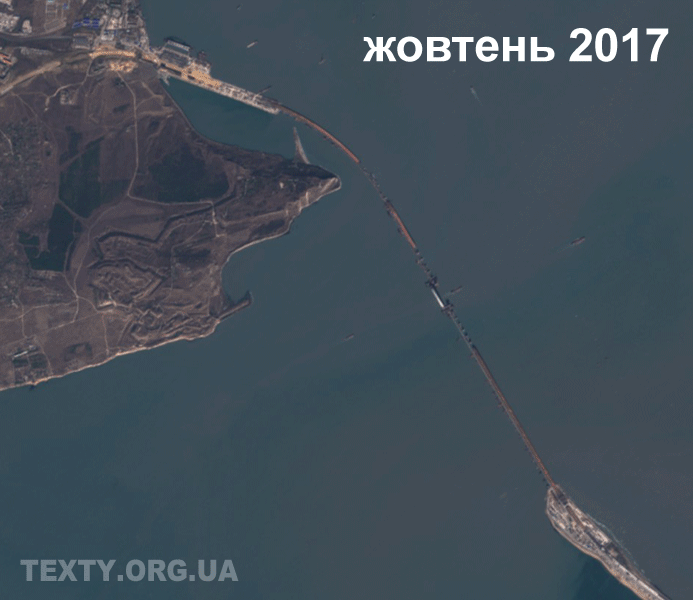
This GIF animation shows the process of “disassembly” of the bridge going backwards from October 2017 to February 2016.
Read more:
- Kerch bridge emblematic of new Russian imperialism, Kazarin says
- How much will Crimea cost Russians?
- Two ports and the Kerch ferry subject to EU sanctions
- How Siemens chose to ignore the obvious. An investigation into the Crimean sanctions break
- Three years later, Crimea abandoned by both Ukraine and Russia
- Siemens’ Crimea sanctions break – a case of criminal negligence | #SiemensGate
- Scandal as Dutch companies help build bridge to occupied Crimea, violating sanctions
- Occupied Crimea is running out of water
- Two years after Russia’s takeover, no Crimean spring
- 260 foreign ships docked at occupied Crimea, violating sanctions
- Russia will decrease Crimea’s financing to 18.2 billion dollars
- Moscow “won’t succeed in building Kerch bridge”
- Putin doesn’t want Russians to continue focusing on Crimea, Goryunova says
- Siemens to help provide forbidden power to Crimea
- ‘3 million people fled from Russia-occupied Donbas’ and other neglected Russian stories
- Putin regime has long had an ideology – Great Power Imperialism
- The Bolbochan raid: How Ukrainian troops captured Crimea 100 years ago



